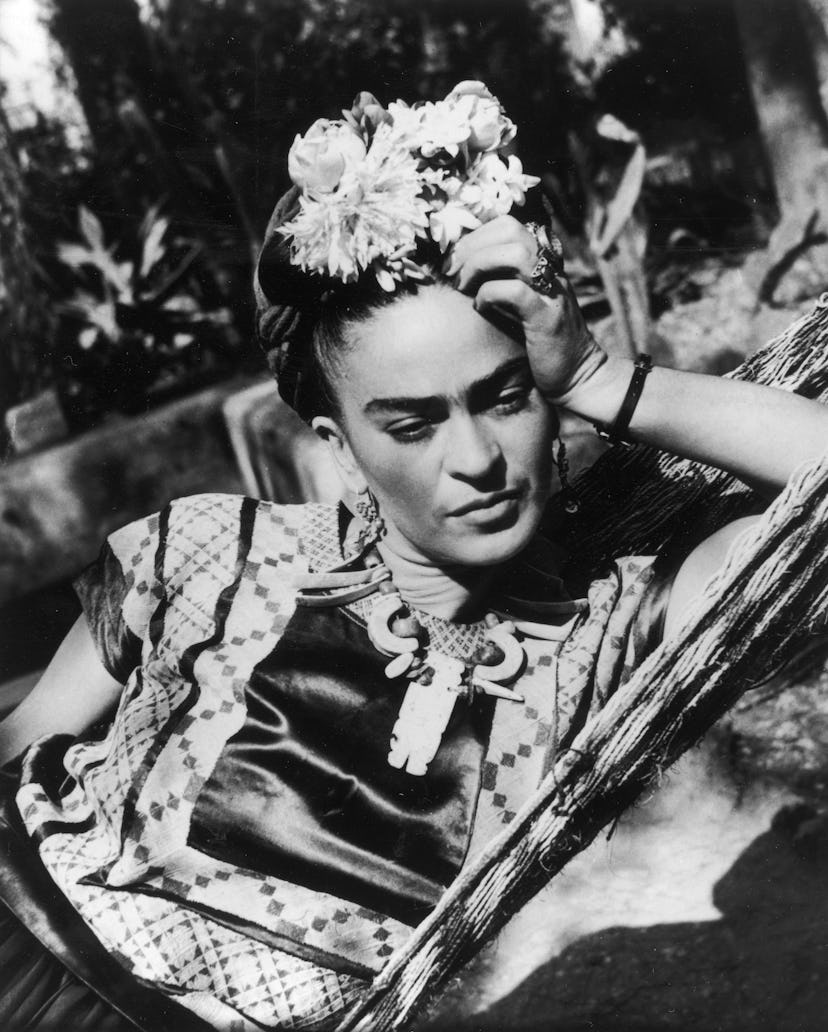Revealed: The Many Faces of Frida Kahlo Beneath the Glamorous Mask of Fame

Sixty-four years ago today, July 13, Frida Kahlo died at just 47 years old, possibly by suicide, following a stormy year in which she developed gangrene and an addiction to the painkillers she needed for the many surgeries she’d recently undergone. Oh, and she also had her right leg amputated—and, somehow, after years of being practically bed-bound, managed to attend the opening of her first-ever solo exhibition. The artist’s grit is just one reason why her icon status endures today—and just one of the reasons why we’ve glamorized her to the point of turning her into a Barbie doll. The real “Frida,” on the other hand, never shied from depicting her true, damaged self in the many, many self-portraits she created over the course of her career. Some were allegorical, but her devotion to depicting the lateral truth can now be seen more clearly than ever at London’s Victoria & Albert Museum. Titled “Frida Kahlo: Making Her Self Up,” the exhibition pairs her paintings with the real-life dresses that they depict. Until recently, they’d been locked away in the Casa Azul—just like Kahlo was in her final years. A number of the other objects are being for the first time outside of Mexico, altogether, they make for one of the most accurate portraits of Kahlo to date. Get to know her a little better with a look inside the show.
Frida Kahlo in blue satin blouse (1939) is one of many of Nickolas Muray’s iconic photos of the artist, his friend and one-time lover.
Another of Muray’s portraits of Kahlo, Frida Kahlo with Olmec figurine (1939).
Kahlo, seen here in 1944, had a number of pet monkeys. She was said to think of them as symbolizing the children she was never able to have.
Kahlo is seen here with Diego Rivera in 1932, three years into their first marriage.
They traveled to New York the following year, stopping by an exhibition of portraits by Lionel Reiss.
Frida Kahlo, Self-Portrait, 1941. Featured in the exhibition “Frida Kahlo: Making Her Self Up,” on view until November 2018 at the V&A.
Kahlo, seen here circa 1950, often dressed in traditional Indigenous attire—and the Indigenous writer Joanna Garcia Cheran’s essay on whether or not that was cultural appropriation is well worth a read.
Frida Kahlo, Self-Portrait, 1948. Featured in the exhibition “Frida Kahlo: Making Her Self Up,” on view until November 2018 at the V&A.
Rivera and Kahlo posed for this photo with their pet dog in Mexico City around the start of their second marriage, which lasted from 1940 up until Kahlo’s death.
Kahlo is seen here alongside a portrait of herself in Tehuana costume holding hands a modern-day version of herself. The photo was taken shortly after she divorced Rivera.
Kahlo had a large garden in the Casa Azul, the Juan O’Gorman-designed home and studio where she was born in 1907 and died in 1954.
Kahlo and Leon Trotsky, posed for this photo with his wife, Natalia Sedova, and associate, Max Schachtman in 1937. It was a big year for the Marxist: He was granted asylum in Mexico after being exiled from the Soviet Union, and upon moving there, he and Kahlo began their affair.
Kahlo was a smoker, hence why cigarettes occasionally turned up in her self-portraits.